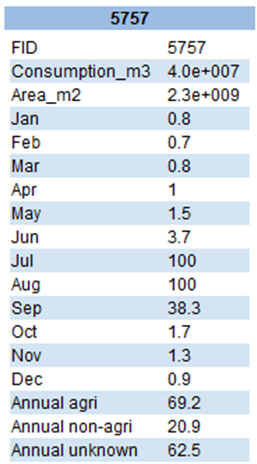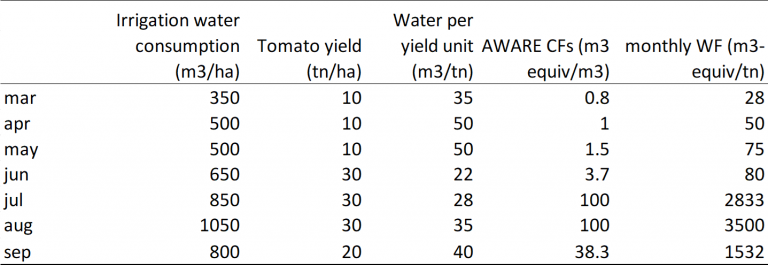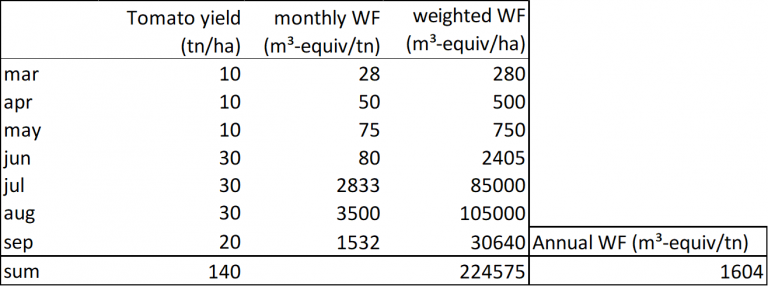
Figure 1: Annual water consumption, watershed area, monthly and annual aggregated AWARE factors shown in Google Earth on selecting watershed 5757.
To identify the AWARE-factors of watershed X, the Google Layer Document of AWARE is used. X is the watershed with FID 5757 and the AWARE factors shown in Figure 1. To calculate the WF of the tomato cultivation, the user has to multiply the water consumption per product unit times the AWARE factors.
Because the tomatoes are cultivated from March to September, AWARE factors of these months are required. The factors for individual months are multiplied with the respective water consumption per ton of yield (water per yield unit), as summarized in Figure 2. This yields a monthly WF in m³-equiv. per ton of tomatoes. Please note that the WF is reported per mass unit here, but other units like ha or € also feasible.

Figure 2: Calculation of the monthly Water Footprint (WF) of a metric ton of tomatoes based on water consumption and yield data of a tomato plantation.
In the following, the calculation process for the tomato juice WF is explained. Three processes are shown, which are suitable for different levels of detail concerning the months used for growing the tomatoes.
If the user knows that the tomatoes for 1 bottle of tomato juice were solely harvested in June, the WF of one bottle of juice is calculated using only the WF of June as:
80 m³-equiv/tn * 0.001 tn/kg * 1.5 kg/bottle = 0.12 m³-equiv/bottle
If the tomatoes could have been grown in any of the months, and all the information of Figure 2 is available to the user, a weighted average of the monthly WFs has to be calculated. The monthly WF in m³/tn is multiplied by the respective tomato yield of that month as shown in Figure 3 and divided by the tomato yield total. This tomato production specific annual WF is then used to calculate the tomato juice WF as:
1604 m³-equiv/ton * 0.001 tn/kg * 1.5 kg/bottle = 2.41 m³-equiv/bottle

Figure 3: Calculation of the annual Water Footprint (WF) of a metric ton of tomatoes.
In some cases a user only knows the annual average water consumption for tomato production (34 m³/tn here) instead of the values for individual months. Instead of calculating the tomato-specific annual WF from scratch, the aggregated WF of watershed X provided by Boulay et al. (2018) is used. The annual agriculture AWARE factor (Annual agri) is chosen from Figure 1 and multiplied with the annual average water consumption for the production of 1 ton of tomatoes:
69.2 m³-equiv/m³ * 34 m³/tn * 0.001 tn/kg * 1.5 kg/bottle = 3.53 m³-equiv/bottle
For further details on the application of AWARE, also see the FAQ. For details on how to find precalculated annual aggregated AWARE CFs for crops or other commodities, see sector-specific AWARE factors.
Please note that this is a simplified example. For a full cradle-to-gate life cycle assessment of the tomato juice, also other water consumption linked to the production of the juice could be relevant, e.g., consumption for fertilizer synthesis. All WF results of the individual water consumptions would be added up to obtain the final WF of the tomato juice in m³-equiv/bottle.
Boulay A-M, Bare J, Benini L, et al (2018) The WULCA consensus characterization model for water scarcity footprints: assessing impacts of water consumption based on available water remaining (AWARE). Int J Life Cycle Assess 23:368–378.